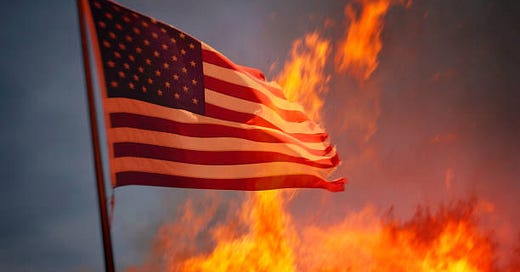How Censorship Became a Bipartisan Cause
And Why Our Struggle Doesn't End When Trump and Musk Are Gone
I am not being hyperbolic when I say these next two weeks are going to be historic weeks in our nation’s still-young history. Next week a bipartisan bill is expected to be introduced to repeal Section 230 — a law that protects Internet companies from liability for anything expressed on their platforms. The following week, TikTok will be banned in the US if it does not make a deal with an American company. For those who forgot, this ban was also bipartisan.
To paraphrase Talking Heads, how did we get here? Freedom of speech goes back to the Bill of Rights of course, but for centuries censorship was an official and unofficial practice in America. As far back as The Civil War, the understanding was that free speech was a right only when the nation is not at war —otherwise it is a privilege. What this also meant was that even at times like these, it would be a contentious issue. Confederates clearly opposed these restrictions. During World War I, isolationists opposed Wilson’s stringent speech limitations.
By the ‘70s, there was a clear split: Democrats were on the side of less restrictions on expression, especially when it came to sex. Republicans reliably were the fire-and-brimstone villagers trying to drive free speech out of schools and televisions.
So when did the Democrats switch? The ‘90s was when the liberal brand of censorship became common: not so much calling for legal bans on speech, but socially castigating those who weren’t tolerant enough. This was especially prevalent on liberal campuses with speech codes. So the liberals and conservatives were both repressive now, but not in a bipartisan way.
For that, we look to 9/11 and the Patriot Act, which was passed with overwhelming bipartisan support on October 26, 2001. Truthfully, most people weren’t affected by it —except for foreigners who would be apprehended on trumped-up terror charges because they weren’t patriotic enough. But that’s before the war on terror was domestic.
Something funny happened in the 2010s — Presidential candidate Donald Trump, with his incendiary tweets, became a symbol of free speech while the easily triggered liberals were the ones who helped make censorship left-coded. As recently as January, when Trump delayed the TikTok ban, censorship was still left coded. It took the arrest of Mahmoud Khalil for Trump to be seen as the truest enemy free speech has had yet.
So now here we are: the Democrats, who were previously only offering weak, playing opossum opposition to Trump, are now outwardly supporting him. But there’s a twist: just as censorship has become a bipartisan cause in the Beltway, free speech has created truly strange bedfellows among the rabble. Everyday people on the left and right oppose the TikTok ban. It is inconceivable that they will prefer even more stringent restrictions than there already are on online content. Once again, there is greater incentive to move the party offline. In the parks, in the streets — protests in these places might not only be good therapeutically for touch grass IRL therapy. It might be how we take back our web.




